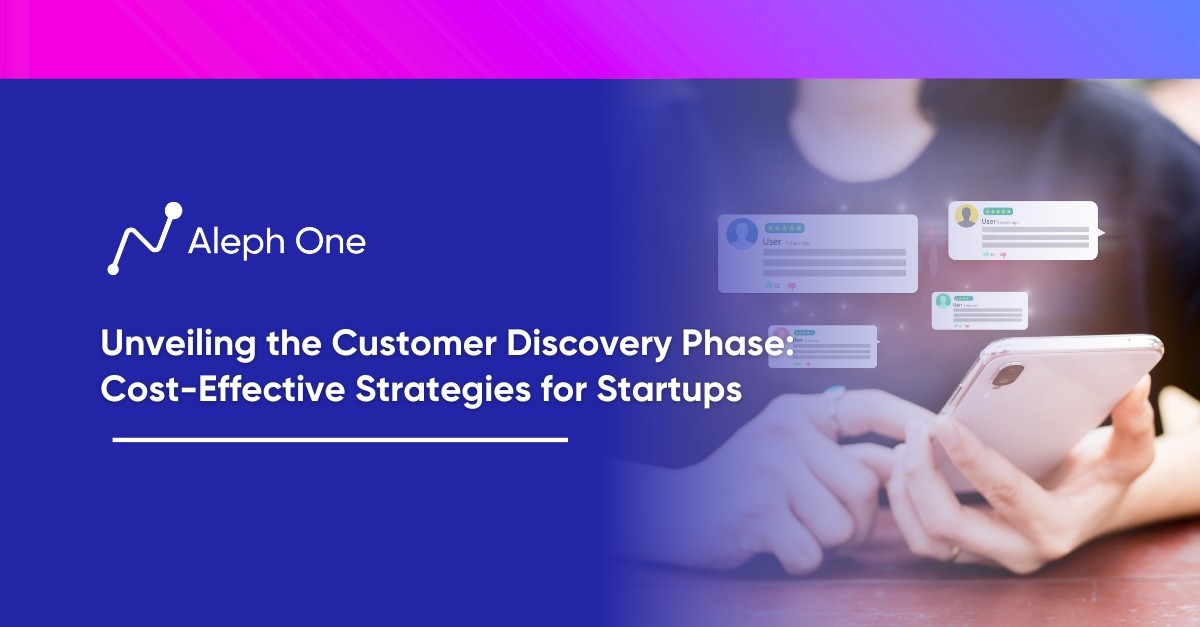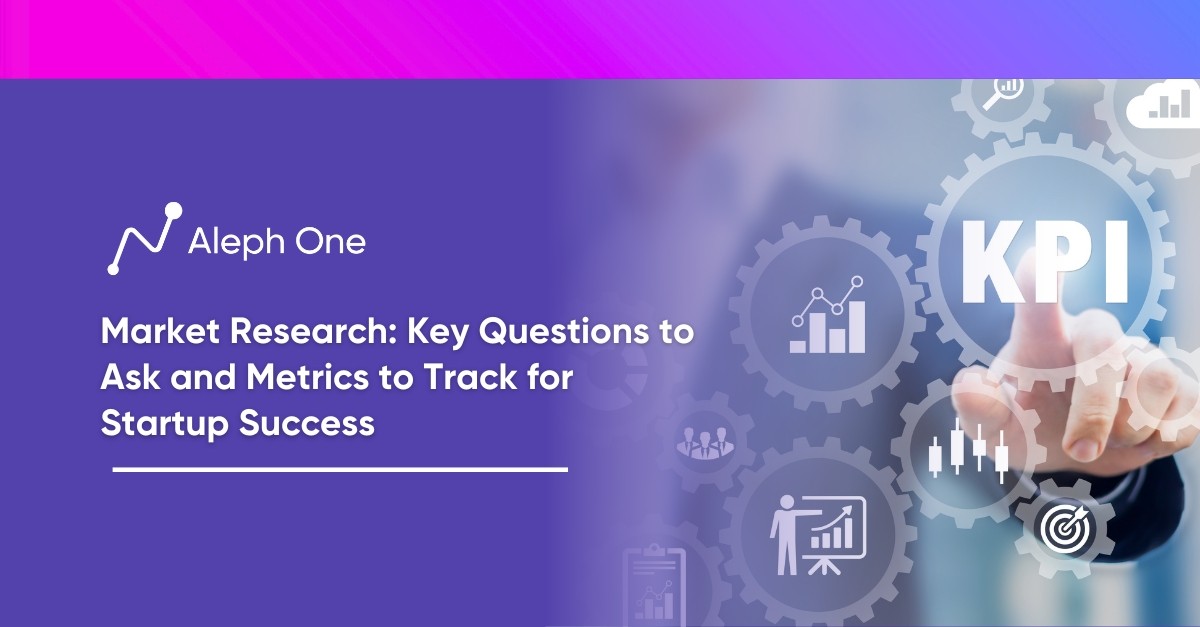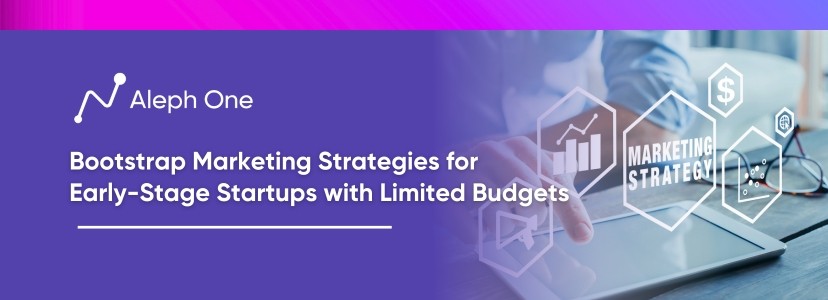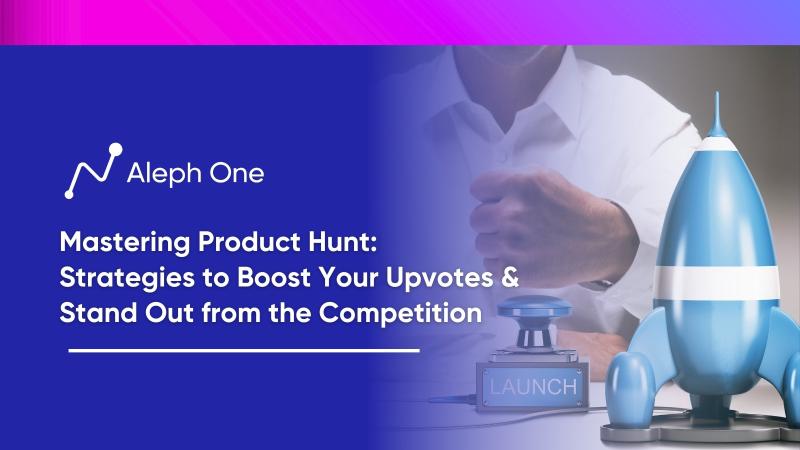Let’s work together to build something amazing. Share your project details and our team will reply to figure out the next steps to your success.

In the exciting world of startups, success hinges on more than just a great idea – it requires a deep understanding of customers and their needs. Enter the customer discovery phase, a critical stage where startups validate their hypotheses and chart a course toward building the right product. In this article, we will go into the strategies that drive cost-effective customer discovery, explore the creation of detailed personas, reveal the power of customer interviews and observations, and highlight the importance of iterating and pivoting based on feedback. With each step, startups can transform insights into an MVP that resonates with target customers and propels them toward startup success.

Define Your Idea: What Problem Are You Solving?
As an early-stage startup, you likely have assumptions about solving problems for customers and the solutions you want to build. Before investing heavily in product development, it is critical to validate your hypotheses and ensure a real market need Start by articulating your initial idea for the product or service you want to provide. What key customer problems or needs will you address? How will you improve upon existing solutions?
Trends & Historical Data
Back up your idea by researching past trends and statistics on your target market. Look for indicators that customers are dissatisfied with current options or that demand for alternatives is growing. For example, if you want to offer an innovative Ecommerce service, cite data on the increasing adoption of online shopping and the new offerings customers say they want from retailers.
Customer Interviews
Conduct initial customer interviews at this stage to determine if your problem idea resonates with real people. While these first interviews will not provide definitive validation, they can help refine your thinking and better understand how your solution might apply to different customer segments. You may need to pivot slightly to focus on a specific niche or that customers describe the problem in a way you have yet to consider fully.
Develop Your MVP
With an articulated idea, start developing your minimum viable product (MVP). Determine the essential features that address the fundamental problems you identified. Outline technical requirements and how you will build the product. The goal is not perfection here but a basic solution you can get into customers’ hands for feedback.
Begin your customer discovery with an idea for the problems you want to solve and the solutions you propose to build. Back this with research and initial customer interviews. Then develop an MVP to start testing your assumptions as quickly as possible. While it may feel premature, diving in with an MVP will provide the real-world feedback you need to iterate your hypothesis and build the right product for your customers.
Build Detailed Personas & Get to Know Your Customers
To truly understand your customers, you must develop detailed personas representing your key customer segments. A persona is a fictional character that embodies your target customers’ key attributes and behaviors. Personas help you gain insights into your customers’ demographics, motivations, pain points, and goals.
How to Start Building a Customer Persona
Start by interviewing and surveying potential customers to collect information like age, location, job title, income level, and family status. Look for patterns in their responses to determine your distinct customer segments. Give each segment a name and photo to make them more relatable.
Add Context to Personas
Add context around each persona’s behaviors, challenges, and environment. For example, “John is a 45-year-old marketing manager at a mid-sized tech company. He commutes 30 minutes to work each day and has two kids in elementary school. John struggles to balance work demands with family responsibilities and often works late into the evening to catch up. He wishes for more flexible work options to allow him to spend more time at home.”
Identify Key Pain Points
Get into the mindset of your personas by identifying their key pain points, frustrations, and unmet needs. For the persona above, key pains may include long work hours, time away from family, and difficult commutes. His requirements include more workplace flexibility, more accessible collaboration with colleagues, and less time tied to an office desk.
Get Customer Testimonials
Bring your personas to life with quotes from actual customer interviews. For example, “In the words of one customer, we interviewed, ‘I feel like work-life balance is a pipe dream. There just aren’t enough hours in the day to get everything done and still make it home for dinner with my family at a decent hour.’” Direct quotes help capture the raw emotion and authenticity of your customers’ experiences.
Detailed personas are essential for startups to make strategic decisions that serve their customers. Personas provide an anchor for developing solutions, messaging, and marketing that resonate with each customer segment. They help build empathy for your customers’ daily challenges and the value your product or service needs to provide. Personas keep you focused on solving real customer problems rather than chasing assumptions.
Test Your Assumptions: Conduct Customer Interviews
Customer interviews are among the best ways to validate your ideas and persona assumptions. Speaking directly with real potential customers allows you to ask open-ended questions and gain valuable insights into their perspectives, experiences, and needs.
How to Conduct Customer Interviews
To conduct compelling customer interviews, recruit diverse participants from your target customer segments. Aim for at least 15-30 interviews to uncover meaningful patterns. Develop a discussion guide with 7-10 open-ended questions about how people currently solve the problem, their ideal solution, and reactions to your proposed product or service.
For example, if you were testing a new meal kit delivery service, you might ask:
- How do you currently plan and prepare meals each week?
- What challenges or pain points do you experience with your meal planning and preparation process?
- If you could design the perfect meal solution for your needs, what would that look like?
- Here is a brief overview of our meal kit concept. What do you like or dislike about this approach? What would make it more helpful or appealing to you?
Look for common themes, phrases, and reactions across interviews. Capture compelling quotes that illustrate key points. You aim to determine how closely your initial hypotheses and personas match reality.
For instance, if multiple interviewees strongly prefer more diet-specific or locally-sourced meal options, your service may need greater customization and a local supplier focus. If people frequently complain about the time required for meal planning but love cooking, pre-made meal kits may need to catch up.
Fine Tune Your Product or Service with Customer Interviews
Customer interviews often reveal surprises and generate new insights to help strengthen your solution. They are also a chance to build personal connections with your target customers. Synthesize and analyze the results to determine how to pivot your hypotheses, personas, and product/service concept to match best what you learned about your customers’ needs. The end result will be an offering finely tuned to solve their most pressing problems.
Observe How Customers Currently Solve The Problem
One of the most valuable customer discovery techniques is direct observation. Observing how your target customers currently solve the key problems or needs you to aim to address can uncover insights that interviews may need to be aware of. Look for opportunities to improve existing solutions through a better experience, lower cost, added convenience, or new technology.
What Warby Parker Discovered Through Observation
For example, the founders of Warby Parker discovered that traditional glasses retailers marked up frames by up to 10x the manufacturing cost by observing customer experiences in stores. They leveraged this insight to launch an affordable direct-to-consumer eyeglass brand. Startups like Uber, Airbnb, and Instacart built their businesses by observing customers’ challenges with traditional taxi, hotel, and grocery services.
How to Observe Your Target Customers
To observe your customers, visit locations where they commonly shop, work, or engage with the products and services you aim to provide. Watch how they interact with current options, take notes on what they like, and don’t like, and where they encounter friction or express frustration. Look for workarounds they create to overcome issues, as these represent opportunities for innovation.
Ask Open Ended Questions
Speak with people informally as they shop or go about their day to ask open-ended questions about what they need and value and how well existing solutions meet those needs. However, be careful not to bias them by mentioning details about your proposed product or service. The goal is to get an accurate view of their experiences with what’s currently available.
Direct observation provides an unfiltered look at the customer experience with existing solutions. While customers may not consistently articulate their needs and pain points clearly in interviews, their actions and behaviors while engaging with products and services demonstrate these insights. Combining observation with in-depth interviews helps provide a complete picture of your customers and how to serve them best. With simple techniques, startups can leverage observational research to drive product-market fit and gain a key competitive advantage.
Iterate and Pivot Based on Feedback
Analyzing the feedback from your customer interviews and observations is crucial to iterating your product and pivoting as needed. Look for key insights confirming your hypotheses and surprises challenging your assumptions. Be willing to pivot your thinking and plans based on what you learn.
For example, if you discover that your target customer personas need to be adjusted or expanded, update them to reflect reality better. If customers indicate they would not use or pay for your product as currently envisioned, you may need to pivot to a different product concept that better solves their needs. Some of the most successful startups today look very different from their initial visions based on insights gained during customer discovery.
Pivot but Stay True to Your Startups Vision
You do not want to pivot so frequently that you lose sight of your North Star vision. Each pivot should be purposeful and tied back to crucial insights. Consider whether a pivot will allow you to solve significant customer problems better or open up a bigger market opportunity. Pivots chasing the latest trends will unlikely lead to a successful, sustainable business.
Develop Your MVP and Validate for Market-fit
It is often easier to pivot early on before you have invested heavily in building a solution. Make pivots during the customer discovery phase, then move into developing your minimum viable product (MVP) to further test key assumptions. However, remain open to additional pivots even after you have launched your MVP if needed to optimize product-market fit.
The key is finding the right balance between sticking to your vision and being flexible based on customer feedback. Let your customers guide the evolution of your product, but avoid pivoting so often that you lose sight of the core problem you set out to solve.
With each iteration and pivot, revisit your customer insights and evaluate whether you are moving closer to or further away from product-market fit. Be transparent with customers about how their feedback has impacted your thinking and product development. By iterating and pivoting purposefully based on customer discovery, you can build a product powerfully validated by the market.
Turn Insights Into an MVP
After conducting customer interviews, observations, and surveys, you have a wealth of insights into your target customers and their needs. It’s time to turn those insights into a minimum viable product (MVP) that addresses the problems you aim to solve.
Focus on the key insights that were most frequently mentioned or passionately discussed by your potential customers. Identify the features or solutions that would impact them most to determine the proper scope for your MVP. Including only the most essential components in your first product is better than trying to boil the ocean. You can always add more functionality over time based on additional customer feedback.
For example, their MVP was simply a file syncing and sharing service when Dropbox launched. They only built features for collaboration, storage limits, or business accounts once they had validated the core concept. Slack started as an internal communication tool for one company and then developed their MVP to improve messaging for teams. They grew from there based on how their initial customers used the platform.
Questions to Ask When Developing a Startup MVP
Your MVP should represent your vision but focus on solving one or two of your identified key problems. Don’t get distracted by new features; determine the minimum product needed to address your customers’ priorities. You can then release additional updates regularly to provide more value over time.
Some questions to ask when defining your MVP feature set include:
- What solutions or features did most of your potential customers agree were missing or needed improvement?
- What would significantly impact your customers’ key pain points or jobs to be done?
- What features do your competitors not offer that your potential customers said they needed?
- What can you build quickly to release the first version in weeks rather than months?
- How can you test the riskiest assumptions about your product or service with a minor feature investment?
From Customer Insights to MVP – Final Thoughts
By focusing your MVP on the key insights from your customer discovery process, you can ensure you are building a product that addresses real needs. Your MVP may have some bells and whistles but will resonate strongly with your target customers. And that is the most essential first step to startup success.
Get the latest news and updates from Aleph One in your inbox.



